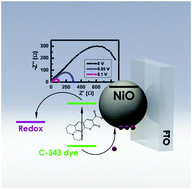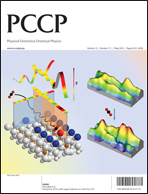Characterization and control of the electronic properties of a NiO based dye sensitized photocathode
Abstract
One compartment tandem DSSCs are based on two photoactive electrodes which are mediated by a redox electrolyte. Electron accumulation in the photoanode (n-type DSSC) alongside hole accumulation in the photocathode (p-type DSSC) should generate high photovoltage using different parts of the solar spectrum. While impressive efficiencies are reported for n-type DSSCs, the performance of the p-type analogue is very low due to insufficient understanding and a lack of materials.


 Please wait while we load your content...
Please wait while we load your content...